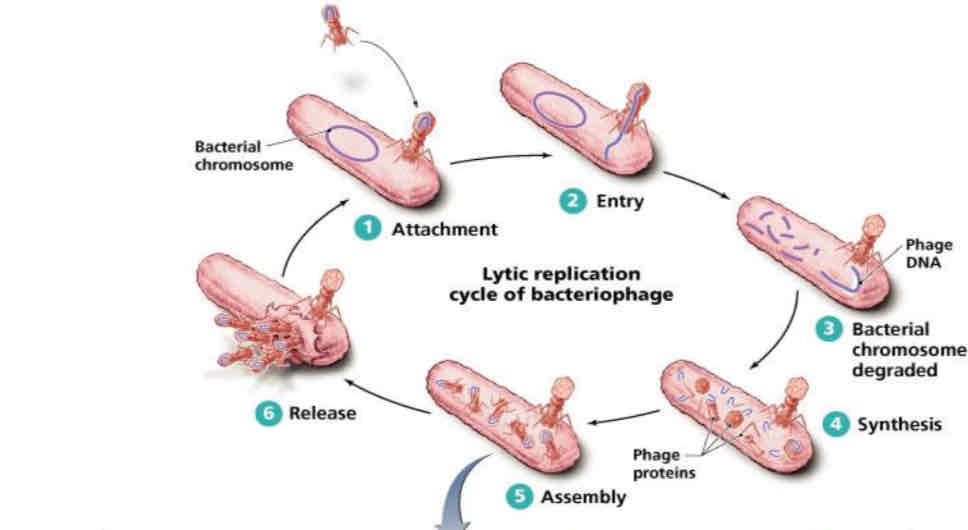CHARACTERIZATION and CLASSIFICATION OF VIRUSES, VIROIDS AND PRIONS
1/81
There's no tags or description
Looks like no tags are added yet.
Name | Mastery | Learn | Test | Matching | Spaced |
|---|
No study sessions yet.
82 Terms
1. Acellular
2. With nucleic acid- either DNA or RNA, but never both
3. With extracellular and intracellular state
4. Obligate intracellular parasite
Characteristics of Viruses
Virion
extracellular state
Capsid
a protein coat, surrounding a nucleic acid core
Nucleocapsid
nucleic acid and capsid
Envelope
a phospholipid membrane surrounding the nucleocapsid; provides both protection and recognition sites
VIRION
extracellular state
Nucleic acid
viral genome
Envelope
- phospholipid membrane
- for protection and recognition sites
Viruses
Are inert macromolecules outside of a cell , but become active inside a cell
Viruses
Do not divide to grow
Viruses
acellular
Viruses
Obligate intracelular parasites
Viruses
Contain either DNA or RNA, never both
Viruses
Genome can dsDNA, ssDNA, dsRNA, or ssRNA
Viruses
Ultramicroscopic in size, ranging from 10nm 30nm
Viruses
Have proteinaceous capsid around genome; some have na envelope around the capsid
Viruses
Replicate in an assembly-line manner using the enzymes and organelles of a host cell
Cells
Metabolize on their own
Cells
Divide and grow
Cells
Cellular
Cells
Most free-Iving
Cells
Contain both DNA and RNA
Cells
Genome is dsDNA
Cells
300 nm to 12cm in diameter
Cells
Surrounded by a phospholipid membrane and often a cell wall
Cells
Self-replicating by asexual and/or sexual means
Genetic material of viruses
Host of viruses
Sizes of Viruses
Capsid Morphology
Viral shapes
Viral envelope
Viruses differ in the following:
Genetic material of viruses
either DNA or RNA (the primary way in which scientist categorized and classify viruses)
e.g. dsDNA, ssRNA, ssDNA, dsRNA
Host of viruses
ALL types of organisms are susceptible
Specific- e.g. HIV virus specifically attacks helper T lymphocytes Generalists- e.g. Rabies virus, infects mammals from humans to bats
HIV virus
Specific- e.g ____specifically attacks helper T lymphocytes
Rabies virus
Generalists- e.g. ____, infects mammals from humans to bats
10 to 300 nm in diameter (400nm largest measurement)
Sizes of Viruses
1892, Dmitri Ivanowsky
(first account of plant viruses-TMV or Tobacco Mosaic Virus); Family: Solanaceae
1935, Wendell Stanley
isolated and characterized the TMV using microscope
Family: Solanaceae
What family does (TMV), Tobacco Mosaic virus belong?
10,000 nm in diameter
0-2500 nm
Red blood cell size
1000 nm x 3000 nm
0-375-750 nm
E. coli ( a bacterium) size
30 nm
Poliovirus size
24 nm
Bacteriophage MS2 size
25 nm
Bacterial ribosomes size
50 nm x 225 nm
Bacteriophage T4
200 nm x 300 nm
Small pox virus
15 nm x 300 nm
Tobacco mosaic virus
Capsid Morphology
- proteinaceous subunits called capsomeres (some capsomeres are composed only of a single type of protein)
- for protection and means of attachments
capsomeres
proteinaceous subunits called (some - are composed only of a single type of protein)
virions
The shapes of _ are also used to classify viruses
helical virus
capsomeres in spiral fashion forming a tube around the nucleic acid)
Polyhedral virus
roughly spherical; icosahedron (most common-with 20 sides)
Complex virus
with capsids of different shapes
small pox virus , rabies virus
examples of complex virus
Viral envelope
ALL viruses lack cell membrane. But some, particularly animal viruses, have a similar in composition to a cytoplasmic membrane surrounding their capsids.
animal viruses
have a similar in composition to a cytoplasmic membrane surrounding their capsids
enveloped viruses
a phospholipid bilayer &proteins (glycoproteins); which appear as spikes for recognition of host cells; acquires it from their host cell
International Committee on Taxonomy of Viruses (ICTV) 1966
was established to provide a single taxonomic scheme for viral classification and identification
Classification of Viruses
based on the type of nucleic acid, presence of envelope, shape and size
1) The Lytic Replication
2) The Lysogenic Repkication Cycle orLysogeny
Viral Replication

1) Attachment
2) Entry
3) Bacterial chromosome degraded
4) Synthesis
5) Assembly
6) Release
The Lytic Replication Cycle

The Lytic Replication Cycle Assembly
Replication of Animal Viruses
Shared by both RNA and DNA viruses
a) Direct penetration
b) Membrane fusion
c) Phagocytosis
The Three Mechanisms of Entry and Uncoating of Animal Viruse
Poliovirus and dengue virus
Example of direct penetration
measles and mumps virus
Example of membrane fusion
Adenoviruses and herpesviruses
Example of Phagocytosis or endocytosis
dsDNA
by RNA polymerase in (nucleus or cytoplasm of cel)
dsDNA
Each strand fo DNA serves as template for its complement (except for hepatitis B, which synthesizes RNA to act as thetemplate for new DNA)
ssDNA
By RNA polymerase in (nucleus of cell )
ssDNA
Complementary strand of DNA si synthesized to act as template
+ssRNA
Genome acts as mRNA
+ssRNA
RNA is synthesized to act as template
+ssRNA (Retroviridae)
DNA is synthesized from RNA by reverse transcriptase; mRNA is transcribed from DNA or RNA polymerase
+ssRNA (Retroviridae)
DNA
-ssRNA
By RNA-dependent RNA transcriptase
-ssRNA
-RNA (mRNA)
dsRNA
Positive strand fo genome acts as mRNA
dsRNA
Each stand of genome acts as template for its complement
budding
Because the host cell is not quickly lysed, _ allows an infected cell to remain alive for some time.
Budding
Release of Enveloped Animal Viruses is through
persistent infections
Infections with enveloped viruses in which host cells shed viruses slowly and relatively steadily are called
1. Exocytosis
2. Lysis
3. Death
Naked Animal Viruses are Released via:
latent viruses or proviruses
Chickenpox and herpes viruses, may remain dormant in cells in a process known as latency; the virus involved in latency is called
Latency
may be prolonged for years with no viral activity, signs and symptoms.
lysogeny
lysogenic
Though latency is similar to as seen with bacteriophages, there are differences.
Some latent viruses do not become incorporated in the chromosomes of their host cells, whereas _ phages always do.